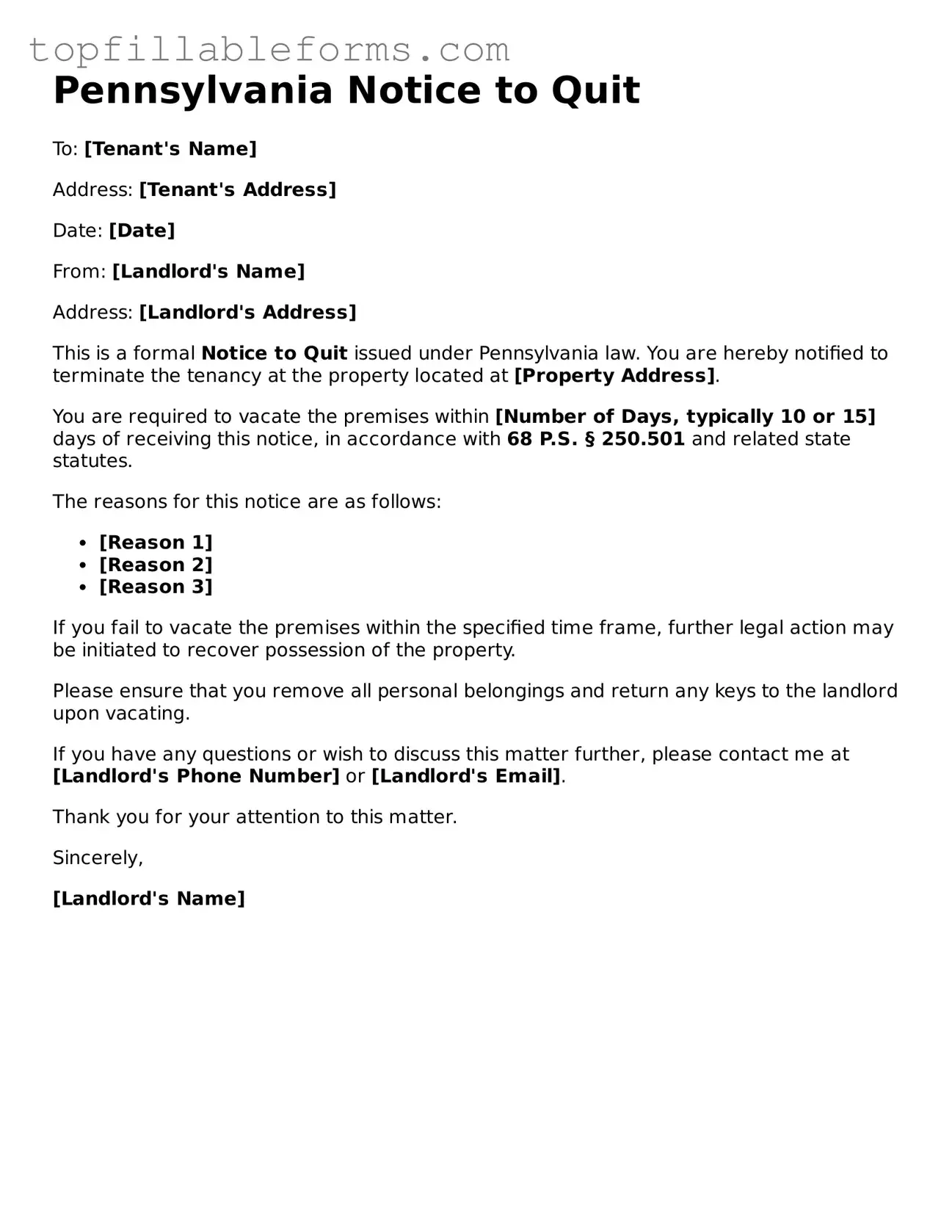Attorney-Verified Notice to Quit Template for Pennsylvania
The Pennsylvania Notice to Quit form is a legal document used by landlords to formally notify tenants that they must vacate the rental property. This notice serves as a crucial step in the eviction process, providing tenants with a specified timeframe to leave. Understanding this form is essential for both landlords and tenants to ensure compliance with state laws and to protect their rights.
Open Notice to Quit Editor Here
